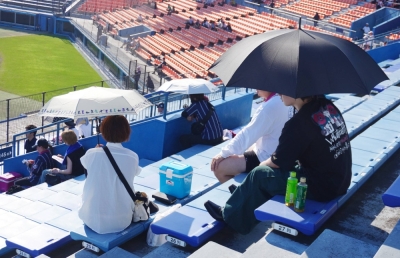Russia needs to ramp up liquefied natural gas exports to replenish Kremlin coffers and fund its war in Ukraine. Western pension funds may inadvertently be lending a hand.
Data compiled by investigative consultancy Data Desk and the Anti-Corruption Data Collective show that public retirement funds, including those managed by the states of Washington, New York and California, have indirectly invested in the specialized ice-class carriers serving Russia’s Yamal LNG — the country’s largest active gas export terminal and a vital piece of its efforts to replace its lucrative trade with Europe.
The Novatek PJSC-led Yamal operation in the Arctic isn’t sanctioned and there is no suggestion that the funds violated any rules. Still, at a time of heightened scrutiny for financial institutions, including from their own investors, the previously unreported link between U.S. investors and one of Moscow’s key sources of income is a reminder of the continued opacity of the global financial system. It also exposes the difficulties of cutting off President Vladimir Putin’s key sources of revenue — even more than two years after the invasion.
In this case, the link between U.S. workers and retirees and Russia is through a New York-based alternative investment manager, Stonepeak, and its $14 billion Infrastructure Fund IV. To date, the fund has invested $6 billion across 10 to 15 assets, including Seapeak LLC, a major owner of gas carriers and formerly the LNG arm of U.S. shipping firm Teekay Tankers.
Stonepeak’s purchase of Seapeak in January 2022 — shortly before the invasion — included ownership stakes in dozens of tankers, among them six of the 16 ice-class vessels that have exported fuel from Yamal this year. Of 160 shipments so far in 2024 from Yamal, more than a third were on Seapeak-owned tankers, according to ship-tracking data compiled by Bloomberg.
"Without these vessels, Novatek, and by extension Russia, would be unable to export LNG from the country's largest project,” said Malte Humpert, founder of the Arctic Institute, a Washington-based think tank. "These icebreaking LNG carriers were specifically designed to carry Russian LNG from the Arctic to Europe and Asia. There's no other market or purpose for them."
One vessel, Seapeak’s Eduard Toll, traveled from Russia and arrived at a terminal in China's Fujian province earlier this month, according to ship-tracking data. This was the first Yamal shipment to China this year via the northern trade route, a passageway set to grow in importance for Moscow.
Seapeak’s venture transports the LNG under long-term charter agreements that date back a decade and it serves the European buyers that take a sizeable portion of Yamal’s gas, a person familiar with the company said. It doesn’t receive revenue directly from Russia or Russia-based entities and complies with all U.K. and EU sanctions, the person added, declining to be named as the details aren’t public.
Europe is still one of the largest buyers of Russian LNG. According to ship-tracking data, France, Spain and Belgium are among the top five importers of Russian LNG this year.
The enduring link is a reminder that while efforts to cap hydrocarbon income continue, Western nations and companies haven’t severed all their financial ties with Russian gas. TotalEnergies SE, for example, remains a shareholder in the Yamal project. Additionally, European insurers continue to underwrite the sector, even as the EU brings in measures to hamper Russia’s long-distance deliveries.
The California Public Employees’ Retirement System, known as Calpers, is one of the investors in Stonepeak’s fund and it said in response to a Bloomberg query that it had already raised concerns with the general partner.
"We believe that Russian investments pose a material risk to our long-term investment success and have taken actions, consistent with our fiduciary duty, to remove these assets from our portfolio,” John Myers, chief of Calpers’ office of public affairs, said in a statement. "We will continue monitoring events to ensure our partners’ actions are consistent with our investment beliefs.”
The Washington State Investment Board, Oregon Public Employees Retirement Fund, New York State Common Retirement Fund and the Teachers’ Retirement System of the State of Illinois declined to comment.
Stonepeak — a signatory of the U.N.-backed Principles for Responsible Investment and a member of the Net Zero Asset Managers initiative, which is part of the world’s largest green finance coalition, the Glasgow Financial Alliance for Net Zero, or GFANZ — also declined to comment for this article, as did GFANZ. A spokesperson for PRI said it was each investor’s responsibility to monitor their portfolio, while its own mission is to promote best practice in sustainable investment.
The uncomfortable link is already prompting calls for increased clarity, in order for investment funds to allow better due diligence.
Ana Maria Jaller-Makarewicz, lead energy analyst at the Institute for Energy Economics and Financial Analysis, a research outfit that focuses on accelerating the energy transition, pointed out that in this case, Stonepeak markets its fund as primarily investing in North American infrastructure assets, raising the question of how much savers know about their exposure to Russia.
"We need more transparency from these funds,” Jaller-Makarewicz said.






With your current subscription plan you can comment on stories. However, before writing your first comment, please create a display name in the Profile section of your subscriber account page.